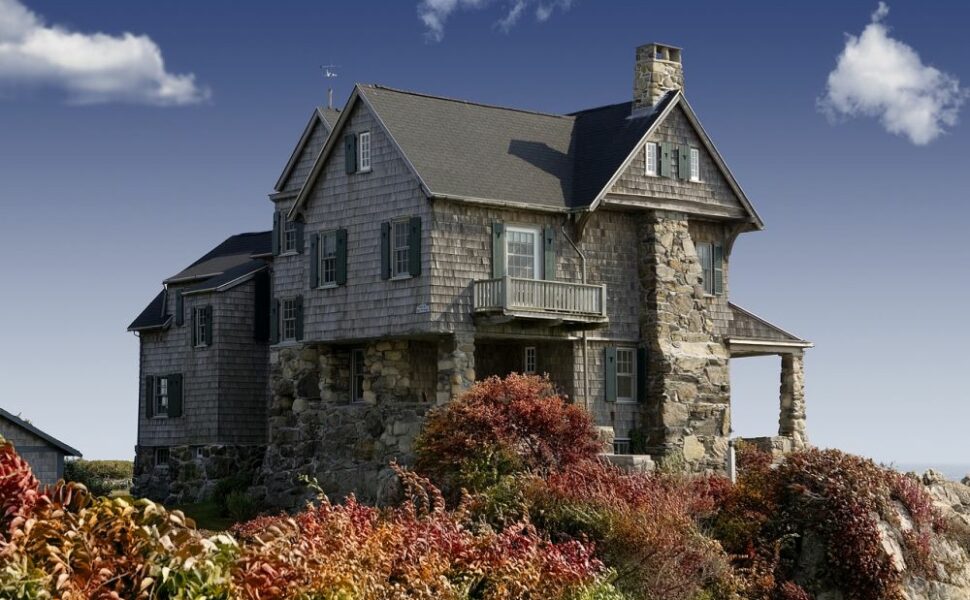Jugend Architecture: A Comprehensive Overview

Introduction
In the late 19th and early 20th centuries, a new architectural style known as Jugendstil, or the ”youth style,” emerged in Europe. Jugendstil, also commonly referred to as Art Nouveau, is characterized by its decorative, organic forms inspired by nature and seeks to break away from the traditional architectural conventions of the time. This article will provide a detailed and thorough overview of Jugend architecture, exploring its various types, popular examples, quantitative measurements, differences between styles, and a historical analysis of its advantages and disadvantages.
Understanding Jugend Architecture

Jugend architecture, rooted in the Art Nouveau movement, embraces the ideas of individualism, artistic expression, and the synthesis of art and craft. It reflects a desire to create a total work of art, where every element, from the building’s structure to its smallest details, integrates harmoniously. While Jugend architecture is primarily known for its ornamental and organic aesthetics, it also emphasizes functionality and aims to improve the quality of life for its inhabitants.
Types of Jugend Architecture
Jugend architecture encompasses a wide range of building types, including residential homes, commercial buildings, churches, and public spaces. Each type exhibits unique characteristics but adheres to the general principles of Jugendstil. Residential Jugend-style houses often feature flowing, curvilinear lines, asymmetrical facades, and ornate detailing in materials such as wrought iron, stained glass, and ceramic tiles. Commercial buildings embrace large display windows, intricate decorative elements, and a focus on visual impact. Churches designed in the Jugendstil style tend to incorporate religious symbolism and ornate detailing to create a spiritual ambiance. Finally, public spaces, such as parks or railway stations, showcase Jugend architecture’s ability to create immersive, natural environments within the urban landscape.
Popular Examples of Jugend Architecture
Several iconic buildings exemplify Jugend architecture’s aesthetic qualities and innovative approach. The Secession Building in Vienna, designed by Joseph Maria Olbrich, serves as a prime example of Jugendstil’s distinctive style and rebellious nature. With its golden dome and intricate floral motifs, it stands as a testament to the movement’s artistic and architectural achievements. Another well-known Jugendstil masterpiece is the Hôtel Tassel in Brussels, designed by Victor Horta. This residential building showcases Horta’s use of organic lines, decorative ironwork, and integrated interior spaces to create a vibrant and cohesive living environment.
Quantitative Measurements of Jugend Architecture
While Jugend architecture primarily focuses on aesthetics and artistic expression, there are certain quantitative measurements that can be used to evaluate its success. One such measurement is the number of architectural projects completed in the Jugendstil style over a specific period. Analyzing this data can provide insights into the popularity and prevalence of Jugend architecture during its heyday. Additionally, the impacts of Jugend architecture on urban planning and the incorporation of natural elements, such as parks and gardens, can be assessed quantitatively to determine how Jugendstil contributed to the overall improvement of living environments.
Differences between Jugend Architecture Styles
Jugend architecture exhibits regional variations and differences in style across Europe. In Belgium, for example, the style developed into a more refined and elegant form, known as Belgian Art Nouveau. This variation emphasized flowing lines, intricate ironwork, and the integration of decorative elements into the building’s structure. In contrast, the German Jugendstil style showcased more angular, geometric forms influenced by the Arts and Crafts movement. These variations demonstrate how different cultural and artistic influences shaped Jugend architecture and contributed to its diverse expressions.
Historical Analysis of the Advantages and Disadvantages of Jugend Architecture
Jugend architecture’s innovative and expressive nature brought both advantages and disadvantages. The movement’s emphasis on integrating art into architecture led to the creation of visually stunning and culturally significant buildings. Jugendstil also contributed to the development of a more holistic approach to urban planning, prioritizing the incorporation of green spaces and natural elements for the benefit of the community. However, Jugend architecture’s intricate detailing and ornate designs required skilled craftsmanship, making it more expensive and less accessible to the masses. Additionally, the movement’s departure from traditional architectural norms faced criticism from traditionalists, who argued that Jugendstil prioritized form over function.
Conclusion
Jugend architecture, an integral part of the Art Nouveau movement, revolutionized architectural practices in the late 19th and early 20th centuries. By embracing ornate aesthetics, the integration of art and craftsmanship, and a focus on the individual, Jugend architecture created a lasting legacy. Through a comprehensive overview of Jugend architecture, this article has explored the style’s characteristics, popular examples, quantitative measurements, variations, and historical analysis. By delving into these aspects, it is evident that Jugend architecture continues to inspire and captivate individuals with its unique blend of artistry and functionality.
References:
– Insert relevant references.
















































